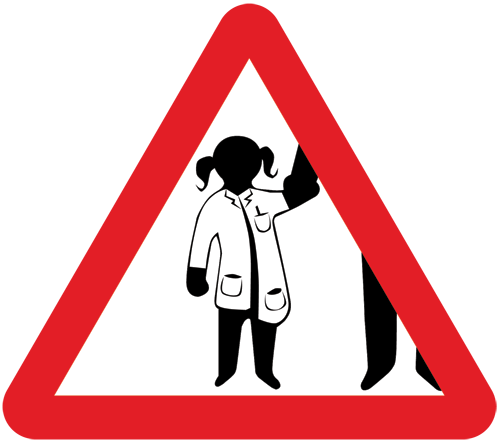Chromatography Butterflies
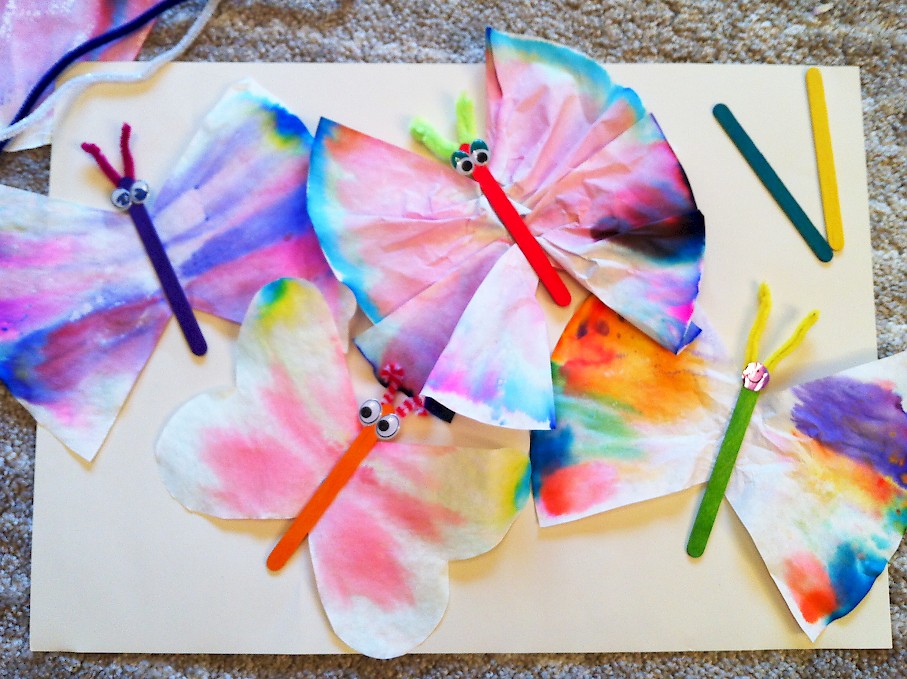
Did you know that most inks are not made of one but many colours? In this experiment we blend art with science and make a batch of pretty flutterbies!
Experiment
- Use the felt-tip or whiteboard pens to draw some lines and dots at the base of the filter paper on both sides. It's a good idea to write in faint pencil underneath what colours you used.
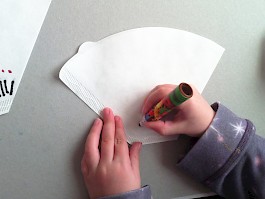
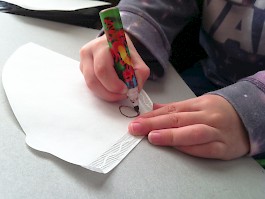
- Put the filter paper in very shallow water and watch. What happens?
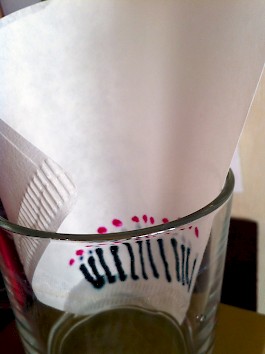
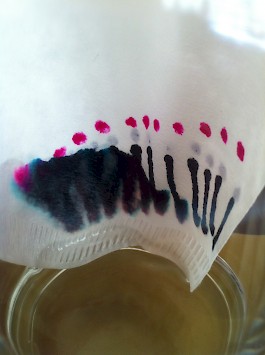
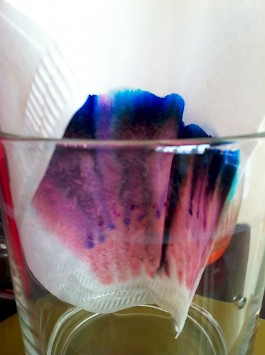
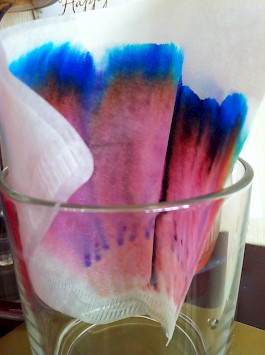
- Take the filter paper out and put it somewhere to dry.
- Try drawing some patterns and using different colours - what works best?
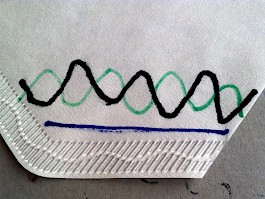
- Once you've got a few filter papers done and fully dry again, grab your craft materials.
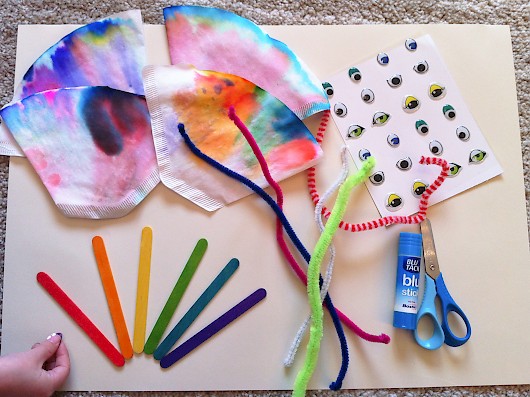
- Cut the edges off the filter papers to open them out and make some chromatography butterflies!
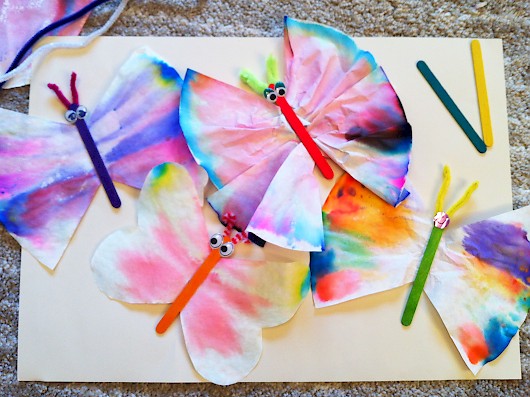
So what's happening?
The ink in your pens often isn't a single colour, but is made of several colourful chemicals that we are separating out again. When the water soaks into the filter paper by capillary action, it dissolves and carries some of the ink molecules with it. The bigger, heavier molecules in the ink don't move as far as the smaller, lighter ones so they move with the water at different speeds and settle in different places as the water travels upwards.
You will probably find that the darker inks like black and brown work best because they tend to be made of many more colours.
This is the basis of paper chromatography, which is one of the most useful techniques chemists have to separate chemicals from a mixture!
What if?
What would happen if you:
- Used permanent markers in place of felt-tip or whiteboard pens?
- Used cooking oil instead of water?
- Made the paper wet at the top and bottom at the same time?
- Used pens of different brands?
